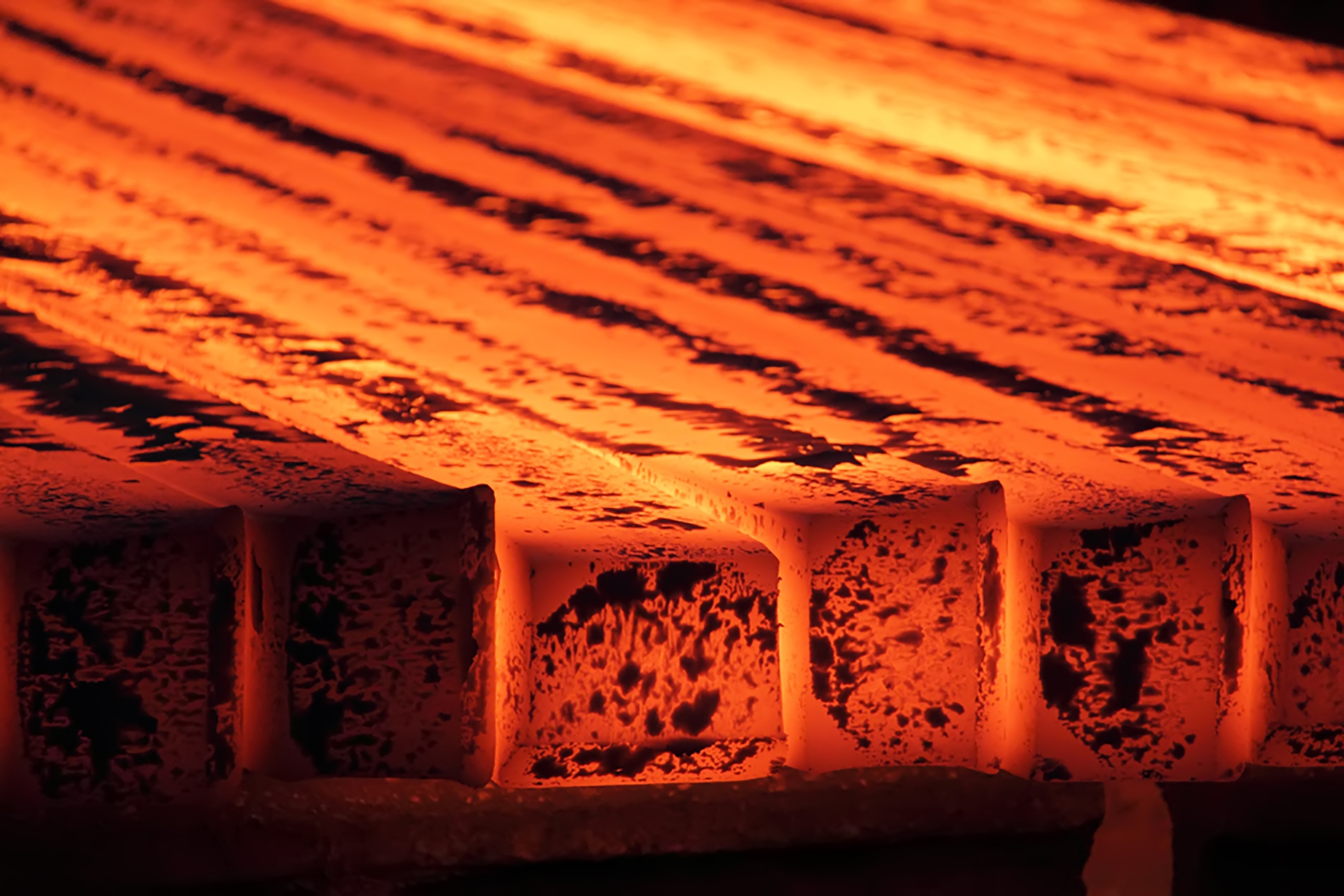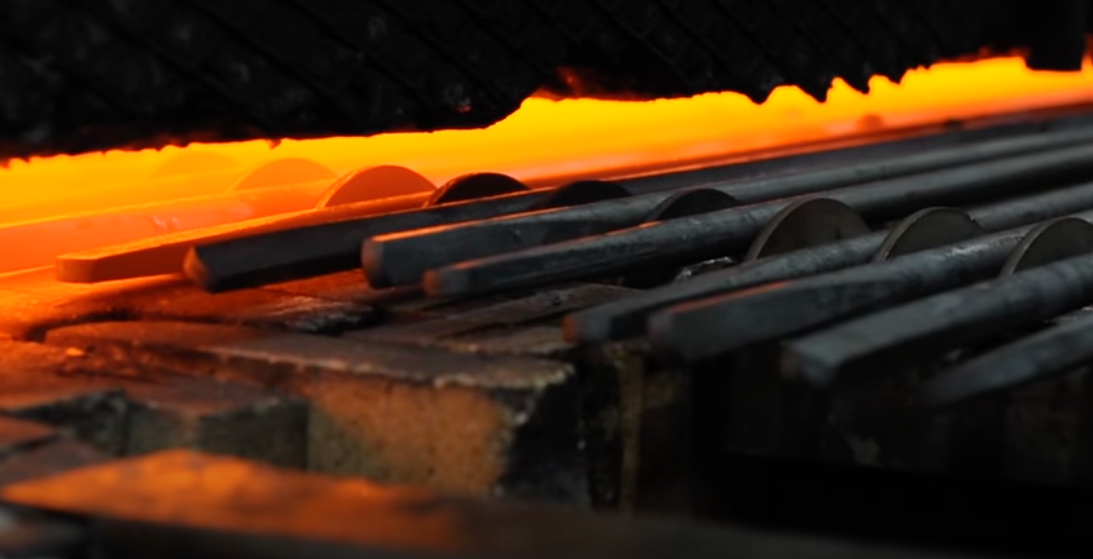Stress Relieving vs Heat Treating Springs: Is There a Difference?

Although
stress relieving can be considered a type of heat treatment, most experts view
them as distinct processes. Stress relieving applies heat to relieve pressure
or tension in a metal, while heat treating uses temperature changes to alter a
metal’s mechanical properties.
In the spring industry, you hear a lot of spring manufacturers use the words stress relieving and heat treating, often interchangeably. However, the idea that heat treating and stress relieving are interchangeable is a misconception. The two processes are very different and, when used correctly, produce different characteristics in the final spring product.
What Is Stress Relieving?
The dictionary definition of stress relieving is: “removing stresses in a material, usually by heating it to a temperature at which it can deform easily.”
When you form a spring, the spring wire you’re using goes through a coiling or forming process that introduces stresses into the material. For the spring to perform at its highest level, those stresses need to be relieved. The easiest way to do that is by applying heat. This stress relief process is sometimes known as a stress relief heat treatment.
Stress relieving is typically used for cold drawn stainless steel or carbon steel springs. Stress relieving stainless steel after machining is particularly common for both springs and other components.
Why Is Stress Relieving Important?
If stresses are not removed, then over time a spring will become more and more unstable. You will begin to see a higher probability of the material failing during its lifecycle time. Without stress relief, springs that are put into use have shorter lifecycles and lower reliability.
How Does Stress Relieving Change a Spring?
Stress relieving makes a spring’s performance and lifecycle more reliable over a longer period of time. What’s also interesting about stress relieving processes is that they change the spring itself.
If a spring undergoes a stress relief heat treatment, then the spring that was initially formed is altered before ever being shipped to the final customer or end user. The shape of the spring changes during stress relieving, which is usually most apparent in the overall diameter of the spring. How the diameter changes will differ based on the material. For example, stress relieving a carbon steel spring will decrease the size of the coil diameter. The opposite occurs when you stress relieve a stainless steel spring, as the spring coil diameter will increase after the process.
Below is a chart that shows what happens to a spring when stressed relieved, including the temperatures and time required for stress relieving springs made from different materials.
Effect of Stress Relieving Processes on Different Spring Materials |
|||
Spring Material |
Outer Diameter |
Required Temperature |
Process Time |
Hard Drawn |
Decreases |
550 F |
20 mins |
Valve Oil Tempered |
Decreases |
600 F |
60 mins |
Oil Tempered |
Decreases |
500 F - 600 F |
30 mins |
Music Wire |
Decreases |
500 F |
30 mins |
Stainless Steel 302 |
Increases |
600 F - 650 F |
30 mins |
Stainless Steel 316 |
No change |
700 F |
1 hour |
Stainless Steel 17-7PH or 17-4PH |
Increases |
900 F |
1 hour |
Inconel X-750 |
No change |
1225 F |
4 hours |
Chrome Silicone |
Decreases |
800 F |
30 mins |
Chrome Vanadium |
Decreases |
800 F |
30 mins |
Beryllium Copper |
Decreases |
600 F |
30 mins - 2 hrs |
What Is Heat Treating?
Heat treatments take a material and heating it to change its mechanical properties. There are different types of heat treatments.

Common Heat Treatment Processes
Annealing - Annealing involves heating the material to a specific temperature and then cooling it slowly to make it softer and more ductile.
Normalizing - Normalizing is similar to annealing but involves air cooling the material instead of slow furnace cooling, which results in a more uniform grain structure.
Quenching - Quenching is a rapid cooling process that involves immersing the heated material in a quenching medium such as oil, water, or polymer, to achieve high hardness. Quenching is the most widely used heat treatment process in spring manufacturing.
Tempering - Tempering follows quenching and involves reheating the quenched material to a lower temperature, which reduces brittleness while retaining hardness and strength.
Using Multiple Heat Treatments
Springs frequently undergo multiple heat treatments to ensure the final product has the desired characteristics. Hot wound springs, for example, are typically formed after the spring material is annealed. Once the material is annealed, the spring is formed, then quenched to achieve the proper hardness. Cold wound springs can also be put through multiple heat treatments.
Benefits of Heat Treating
Depending on the process, heat treatment of metals offers several key benefits, including:
- Improved mechanical properties
- Enhanced wear resistance
- Increased hardness
- Better machinability
- Greater wear resistance
- Longer service life
By modifying the microstructure of materials, heat treating can significantly increase metal’s strength and toughness, making the final product suitable for demanding applications. Additionally, the enhanced wear resistance resulting from heat treating prolongs the service life of components, reducing maintenance and replacement costs.
Furthermore, heat-treated materials often exhibit improved machinability, allowing for easier shaping and forming processes during manufacturing. This can lead to higher productivity and cost savings in machining operations.
Overall, heat treating enables manufacturers to produce materials with tailored properties that meet specific performance requirements, thereby expanding the range of applications for a wide variety of materials.
Are Stress Relieving and Heat Treating Different?
Heat treating and stress relieving are both critical manufacturing processes that have a profound impact on the properties and performance of materials, particularly springs. Since stress relieving is done by applying heat to a metal, it is sometimes considered a type of heat treatment. However, the processes themselves are very different. They are each accomplished in different ways and affect the final product differently, which leads most spring and metal component manufacturers to consider stress relieving and heat treating as different processes.
If you have any questions about stress relieving or heat treating, including processes not mentioned in this article, feel free to reach out to us. We have a team of design engineers and experienced manufacturing professionals who can help.
Questions? Ask an Expert

About the Author: Chris Kozka
Chris Kozka is a spring engineer and operations manager at MW Components. He has over 20 years of experience in design and estimating. He has also worked as a chief engineer focusing on developing design processes that result in quality improvement and waste reduction. He currently services as both the secretary and treasurer of the board of the Chicago Association of Spring Manufacturers and continues to support numerous MW Components customers with spring design and manufacturing projects.
You can reach Chris by email at ckozka@mwcomponents.com if you have any questions or inquiries.